Killzone Message Board older than one year ago

- If You Think Good Graphics Make Characters Worth Caring About, You're Probably Insane
#graphics Last week, when the folks behind Killzone went on Jimmy Fallon's late night show to talk PS4, they said something that stuck with me. More »

- Killzone On The PS4 Is Absolutely Stunning. Let's Stare At It.
#gifs Guerilla Games revealed Killzone: Shadow Fall yesterday during the PlayStation Live Meeting, showing us our dramatic escape through the skyscrapers of Vekta City in the middle of a full-scale Helghan ...

- Next-Gen Screenshots Show A Little Killzone Murder On The PS4
#killzone If you were expecting a next-gen shooter on the PS4 to look a lot like it would on the PS3, only shinier, well, congratulations. You were right. More »

- Killzone: Shadow Fall announced for PlayStation 4
Killzone: Shadow Fall is the latest entry in Sony's flagship shooter series. Guerilla Games' Herman Holtz likened the game's setting to Cold Wa-era Berlin "The helghast have evolved and claimed genetic superiority. The conflict draws parallels with cold ...
Update: You can check out the video for the game's announcement demo over here.
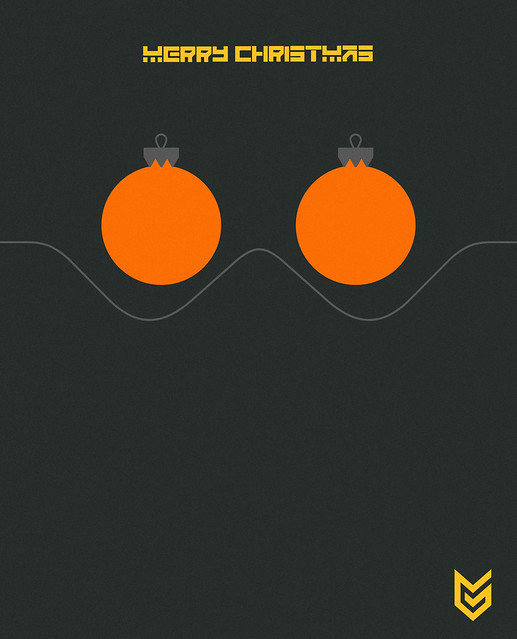
- Happy Holidays from Guerrilla Games!
Happy holidays from all of us here at Guerrilla! [img] As 2012 draws to a close, we look back at an eventful year for Guerrilla and the Killzone series. In February we released Killzone 3 Multiplayer, a standalone version of Killzone 3’s online mode and...
Happy holidays from all of us here at Guerrilla!

As 2012 draws to a close, we look back at an eventful year for Guerrilla and the Killzone series. In February we released Killzone 3 Multiplayer, a standalone version of Killzone 3’s online mode and DLC maps, on the PlayStation Store. In August we announced a new handheld title for PlayStation Vita called Killzone: Mercenary, which sees its protagonist fight on both sides of the ISA-Helghast conflict. And in October we simultaneously released Killzone Trilogy, a bundle containing all three first-person shooters in the Killzone series, and Killzone HD, a high-definition remaster of our original Killzone game.
In addition to these planned events, there were also a few surprises along the way. In early November we were wowed by a 15-minute fan-made live action film called Killzone Intercept, which even blew our own live action trailer for Killzone: Mercenary out of the water.
Director Brian Curtin had been in touch with Guerrilla about his ambitious plans for a short Killzone movie, but we were still unprepared for the level of awesomeness he’d bring to the project. The end result is a testament to the sheer creativity of our fans, and we feel very blessed to have such dedicated followers.
But the biggest highlight of the year was being able to welcome SCE Cambridge Studio into our fold. We’ve officially become a multi-studio company! Guerrilla Cambridge — as our new sister studio is known — is working hard to ensure that Killzone: Mercenary will be the ultimate handheld first-person shooter experience when it launches for PlayStation Vita in 2013.
The team is intimately familiar with handheld game development, having previously worked on titles such as LittleBigPlanet for PSP, and they’ve done a phenomenal job adapting the Killzone 3 engine to the PS Vita platform.
2013 is gearing up to be another big year for Guerrilla – quite possibly the biggest since we released the original Killzone way back in 2004. We’ll have more details for you at a future date, but until then we hope you share a wonderful holiday with your loved ones, and we’ll see you in 2013.

- Killzone Intercept Q&A: Fighting the Helghast on Film
Killzone Intercept is a fan-made live action short set during the ISA evacuation of Helghan in Killzone 3. The 14-minute film follows a small ISA squad as they’re ordered to prevent a large contingent of Helghast troops from intercepting the retreating ...
Killzone Intercept is a fan-made live action short set during the ISA evacuation of Helghan in Killzone 3. The 14-minute film follows a small ISA squad as they’re ordered to prevent a large contingent of Helghast troops from intercepting the retreating ISA convoy. Outnumbered, the squad takes on the task with hopes of getting everyone off the planet alive.
Since its release on the Internet last week, Killzone Intercept has been a small sensation among Killzone fans and novices alike. At the time of writing, the fan film has amassed nearly 170,000 views – and it’s not showing signs of slowing down. We got in touch with director (and longtime Killzone fan) Brian Curtin to find out how Killzone Intercept came together.
PlayStation.Blog: Tell us a little bit about yourself. How did you get started making fan films?
Brian Curtin, Director of Killzone Intercept: I consider myself an Art Director/Graphic Designer by day and Independent Filmmaker by night. I’ve always been interested in the arts. Early on in high school it was illustration and animation. Moving on to college I studied Graphic Design, but I was always making stupid little videos with friends in the dorm rooms and around school. I graduated with a Graphic Design focus, but I kept making videos on the side. They’re a great creative outlet. Plus, they kept getting better due to my growing experience and improvements in technology. The first video we uploaded to YouTube was Concrete Hustle, a humorous lightsaber duel. We technically tried to make it serious, but I think that’s what makes it funny. It took a year before it really started becoming popular. That gave us motivation to tackle bigger projects that inspired us, like the Half-Life based Beyond Black Mesa and after that, Killzone Intercept.
PSB: When did you decide you wanted to create a Killzone fan film?
BC: I’m a sucker for futuristic first-person shooters that take place in distressed environments where you battle glowing-eyed enemies. So it’s not a surprise that I would want to attempt a Killzone film. I played Killzone years ago and much like the original Half-Life, it’s one of those games you get lost in. When Killzone 2 and 3 came out, they blew my mind with their fun gameplay and, most of all, their beautiful graphics. The character and environment designs are incredible. Instantly, I started to want to see it in real life. That was the biggest motivation and the biggest challenge at the same time. How do you bring to life characters and a world that is so far out there with limited resources? Nevertheless, we knew we had to try.
PSB: What excited you the most about doing a project based on the Killzone universe?
“It’s crazy to see a squad of glowing eyes running at you.”BC: I love the Helghast. They’re menacing, mean, and at the same time awesome-looking. It was really exciting to be able to see them and the ISA battling on set. Even though the muzzle flashes and special effects were missing during the shots, it’s still crazy to see a squad of glowing eyes running at you from behind a wall of smoke. Never gets old!
PSB: Did you communicate your plans to Guerrilla? How was the reaction?
BC: Luckily we were able to get in contact with the developers at Guerrilla. They were super supportive for the ideas we had. It’s not often you get a response from the creators of a game who care about your crazy project. They were gracious enough to let us use the Killzone soundtracks, sound effects, and a few 3D elements. Those make up a small part of a film, but they’re very crucial for accuracy. Plus, it was fun to get feedback from them during the process. I’m sure they cringed at some points, but ultimately they enjoyed seeing a fan’s interpretation.
PSB: How many people were involved with the project? Was it the same crew that worked on Beyond Black Mesa?
BC: I believe we had a crew of 15 – 20, that’s counting a few others on the post-production side. Not very big for what we were attempting, but a lot bigger than I’m used to. It was nice to have everything covered, not to mention covered by very talented people. They probably handled the workload of 50-75 people and I’m not talking about myself, they are just that good! On our past film Beyond Black Mesa, it was literally four of us at a time – if you weren’t in the shot, you were probably lighting three smoke grenades and then grabbing the camera to shoot. The core Infectious Designer crew who worked on BBM and Concrete Hustle were all a part of this film. Ultimately, they are the guys behind the camera or behind the masks that have helped make all our films possible.
PSB: How long did the project take to complete? How much of that was pre-production, and how much was post-production?
BC: Answering this question always makes me depressed, because the ratio is so bad. Two years for 14 minutes. I have to remind myself that I do all of this between my full time job and my fiancée is patient enough to stay with a workaholic. The first year was mostly pre-production – writing the script, finding locations, figuring out how we were going to make Helghast and ISA costumes and props. The second year was eight very long days of shooting and the rest was editing and post-production. Phew, I’m tired just thinking about it.
PSB: Assuming you didn’t really visit Helghan to film Killzone Intercept, can you tell us about the location where it was filmed?
BC: Surprisingly, Birmingham Alabama has a good look when you’re trying to reproduce Helghan. Since steel production was huge back in the day here, it has left us some really great post-apocalyptic factories. We shot half of the film at two factories and the rest in an active rock quarry. When you add a few futuristic elements, they both look like they’re on a foreign planet.
PSB: The story unfolds very much like an actual Killzone mission, but the flashback at the beginning is unique to Killzone Intercept. Was that a deliberate decision?
BC: The flashback at the beginning with the mother and son was an element I personally wanted to include. I knew early on that some people would really appreciate it and others would find it unnecessary, but ultimately I felt the film needed it. There were a few things I wanted it to do. First of all, I wanted to infuse the concept we often overlook, that war is horrible and no one really wins. I find that soldiers fight for one reason, to keep the ones they love safe, regardless of the many actual reasons or underlying motives of the war they’re in. Second, I wanted it to give our William character a little more depth and show you what he’s fighting for. Third, I really wanted to show a glimpse of Vekta, and show the viewer William’s home town.
It was challenging to dive into serious matters so early on, but I wanted to set a theme that would leave the viewer with some type of take away message at the end. I love non-stop action, but it would have been a really shallow video if it just opened up with four guys riding into a factory shooting, blowing stuff up and then “the end.”
PSB: Which elements from the Killzone universe did you insist on having in the film? Were there any you had to leave out due to time or budgetary constraints?
BC: There are a lot of things I insisted on having in the film. The ISA had to have their glowing blue tech lights. They ended up not being as bright as we wanted in camera, so it was painful, but we amplified them in post. We had to have a Capture Trooper, visually he’s my favorite character. We were lucky enough to find Anthony Kitchens, who was talented and gracious enough to tackle it. He really brought the trooper to life. I did want to have a medic Helghast and a Hazmat Helghast, but those were extremely hard to produce, so they didn’t make it. Lastly, I wanted to shoot a few long shots using a Helicam – it’s basically a miniature helicopter with a RED Epic hanging underneath and it can pretty much fly anywhere – but we just didn’t have the resources. Maybe next time.
PSB: What was the biggest challenge in creating Killzone Intercept?
BC: I know why there aren’t very many live action Killzone films! Everything about it is challenging to create. The characters and environments are so unique; it’s hard to bring them into the real world.
PSB: How do you feel about the response from the fans so far?
BC: I’m very pleased with the response, it seems the majority really appreciates it. I think I can say out of all our films, it’s had the most positive feedback. I’ve learned that putting anything out on the web is going to be loved and hated, but it still baffles me, there are always a few people who put a lot of time to inform me that it’s garbage and watching it was a complete waste of their time….yeah, it’s that guy. I apologize for interrupting troll time. :)

- I Just Got the Hurricane Sandy Edition of a PS3 Game
I’ll be honest: I never really dug Guerilla Games’ Killzone titles. They never really lived up to the Halo-killer hype that accompanied them and never stood out from the FPS landscape in a way that, say, Insomniac’s Resistance games did...

- Killzone HD sets its glowing sights on PSN, available Oct. 23
You don't need to buy the whole Killzone Trilogy to get the remastered version of the original PS2 FPS. The PlayStation Blog has announced Killzone HD will be a PSN download, available on October 23 for $14.99.We certainly don't blame you for missing the...
We certainly don't blame you for missing the game the first time around. It launched back in 2004, and there's just no way we would have cranked up our steam cars, made the trek into town, and handed over paper money to buy a game on a disc. So much effort!

- PS2 KillzoneIs Getting an HD Upgrade For PS3
#killzone Sony will release a boxed set of all three console Killzone games on October 23 for $40, the company revealed today, saying the first one, which was made for the PlayStation 2, will be getting a ...
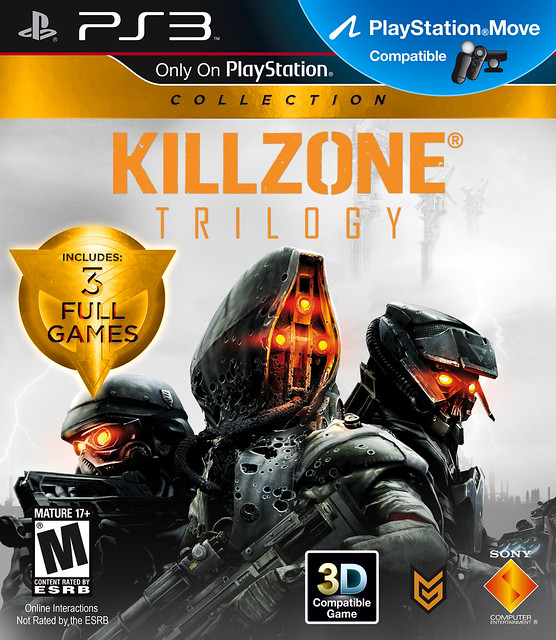
- Killzone Trilogy joins PlayStation Collection on October 23rd
Lock and load: the newest addition to the ever-growing PlayStation Collection library will be Killzone Trilogy — hitting stores on October 23rd, 2012 for $39.99 (MSRP). [img] Like the Collection line-up so far, the original Killzone has been treat...
Lock and load: the newest addition to the ever-growing PlayStation Collection library will be Killzone Trilogy — hitting stores on October 23rd, 2012 for $39.99 (MSRP).

Like the Collection line-up so far, the original Killzone has been treated with the signature 720p HD makeover, along with full Trophy support.
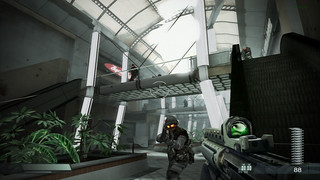
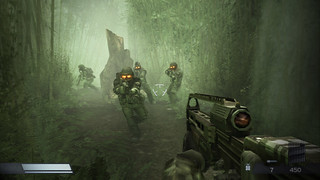
In addition to Killzone HD, the Trilogy also includes Killzone 2. Act 2 in the series brought an even more ambitious sense of scale, storytelling and action to the franchise. Finally, the breathtaking last installment — Killzone 3 — rounds out the set. It’s an endless cinematic warfare experience in one jam-packed bundle.
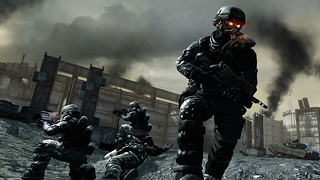
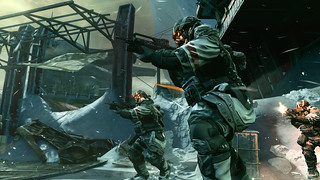
Not only will the Trilogy include the three games, but it will also include all the Killzone 2 and 3 multiplayer map packs free of charge. The full map package is as follows:
Killzone 2 Map Pack Bundle- Steel & Titanium Map Pack
- Flash & Thunder Map Pack
- Napalm & Cordite Map Pack
- Killzone 3 Steel Rain Map Pack
- Killzone 3 Retro Map Pack
- Killzone 3 From The Ashes Map Pack
Check back often — there will be more news as we march toward launch, and you’ll find it here on PS.Blog.
- Killzone PSN version 'delayed indefinitely'
[Update: This post originally called this version of Killzone a "remake" for PS3, but it was intended to refer to the PSN re-release of the PlayStation 2 game.]Killzone the First was scheduled to become a downloadable PSN game in late January, but has sin...
Killzone the First was scheduled to become a downloadable PSN game in late January, but has since been "delayed indefinitely," according to the official Killzone Twitter account.
Killzone franchise creators Guerrilla Games are currently working on the next entry in the series, as well as a still-unnamed "new IP."
- Killzone's PSN Release 'Delayed Indefinitely'
The Killzone official Twitter feed today said the PlayStation Network release of the original Killzone has been indefinitely delayed. It had been scheduled for a Jan. 24 release. [h/t LulzJager] More »
- Killzone remake shot down as 'delayed indefinitely'
When game projects from major studios die, more often than not they aren't outright cancelled, they're "permanently delayed." It's kind of like ending up in limbo, we imagine, but with fewer giant murderous spiders. Anyway, such is the fate of an unannoun...
"With regards to KZ1 for PS3, not sure what happened but I've been informed that it's been delayed indefinitely," the Twitter read earlier today. The account offered "no further info" about the project (after many, many folks pinged it in response). When we contacted Sony for more info, the company confirmed the news as official but declined to offer further comment.
Killzone franchise creators Guerrilla Games are currently working on the next entry in the series, as well as a still-unnamed "new IP." For those of you looking to re-play the original Killzone on a PlayStation 3, well, there's this. That's ... something, right?

- Killzone 1 on PS3 'Delayed Indefinitely'
Killzone on PSN has been "delayed indefinitely." The game was announced last month for a re-release on PlayStation 3, but this morning brought the following message on the Killzone.com Twitter account: "With regards to KZ1 for PS3, not sure what happened...